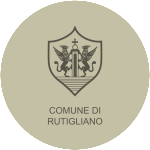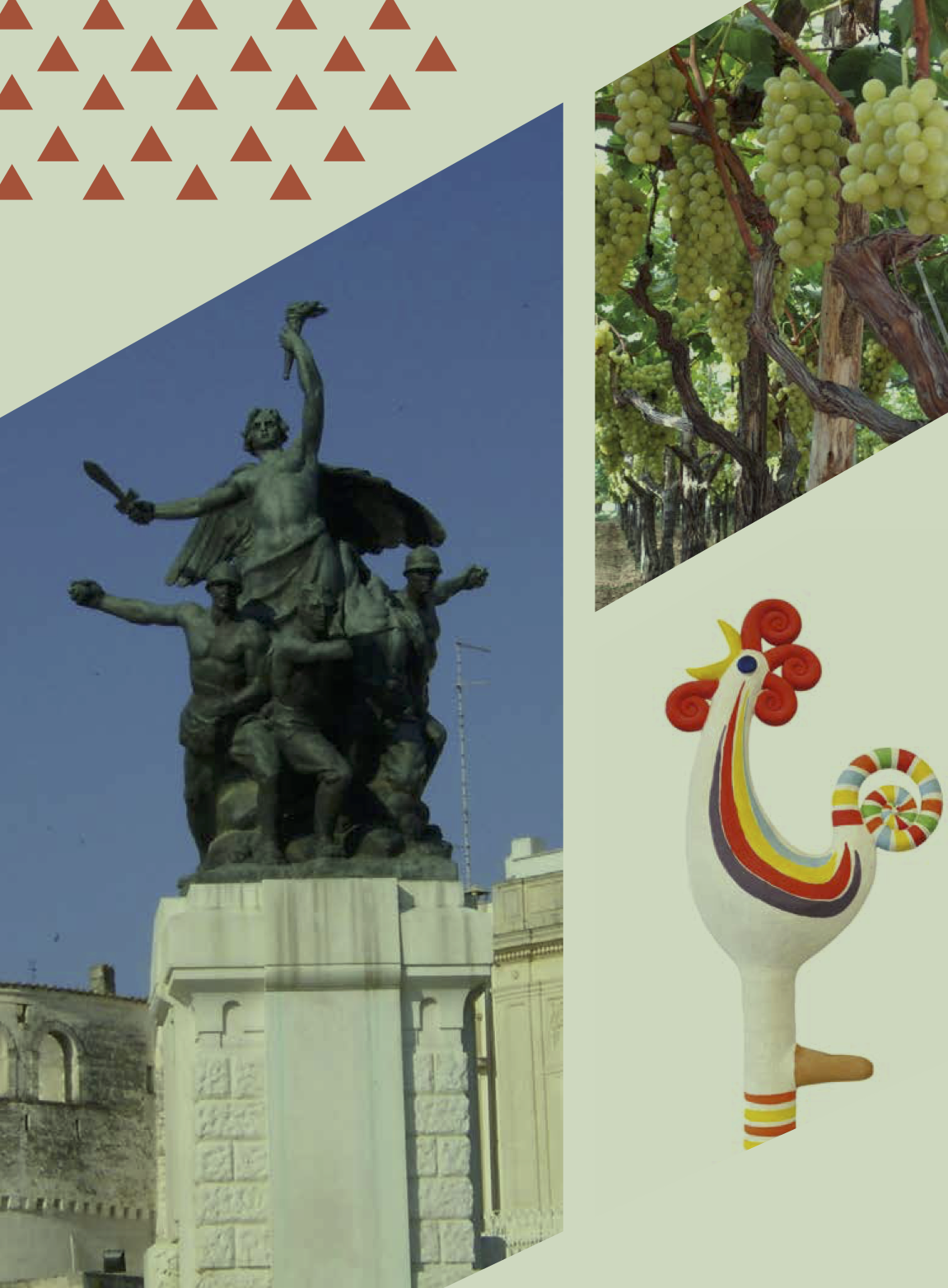Situata a 20 km da Bari e posta sui primi rialzi del- le Murge, Rutigliano è una «Città d’Arte» di origini antiche. È nota in Italia e nel mondo per la produzione di pregiati grappoli di uva da tavola, ma anche per i suoi straordinari tesori ar- cheologici rinvenuti nelle campagne circostanti. Il suo caratteristico borgo antico è dominato dalla Torre nor- manna e dalla Collegiata di Santa Maria della Colon- na e San Nicola, scrigno di preziose opere d’arte. La sua rinomata banda musicale si esibisce dal 1877 nei teatri e nelle piazze di tutta Italia. Rutigliano è anche la “capi- tale” dei Fischietti di terra- cotta: variopinti manufatti realizzati dagli artigiani lo- cali che riproducono in sva- riate forme il “Gallo” (dono dell’innamorato alla propria donna) o personaggi locali, della politica nazionale, del- lo spettacolo, dello sport, raf- figurati in pose caricaturali.
Ai fischietti di terracotta sono dedicati una singolare Fiera e un Concorso Nazio- nale che ogni anno, in genna- io, attirano a Rutigliano mi- gliaia di turisti provenienti da tutta Italia e dall’estero. Inoltre di grande rilevanza è il Museo del Fischietto in Terracotta «Domenico Di- vella», unico in Italia, che raccoglie diverse centinaia di manufatti sibilanti rea- lizzati dai migliori artisti italiani della terracotta.
Situated 20 km from Bari and 200 meters above sea-le- vel, Rutigliano is a city of art whose origins date from Italy’s ancient historic and pre-historic past. Nestling in the countryside of Murgia, rich in fossils and in farms, it is known throughout Italy and the world for its fine de- sert grapes and also for its extraordinary archaeologi- cal treasures, safeguarded in the municipal Museum which exhibits invaluable fossil discoveries found in the surrounding countryside with its dolmen tombs and grave goods.
The quaint old town is domi- nated by the Norman Tower and by the Collegiate Chur- ch of Santa Maria della Colonna and San Nicola, a veritable treasure-chest of priceless works of art. The town has a very well-known musical ensemble that has performed since 1877 in the- atres and open-air spaces throughout Italy.
Rutigliano is also the “capi- tal city” of terracotta whist- les: colourful creations made by local craftsmen in an infi- nite variety of shapes and si- zes. These will either depict the traditional rooster (Gal- lo) that a man would give to a woman he was courting, or they will portray caricatures of local notables, national politicians or famous figures from the worlds of enter- tainment or sport. Examples of such terracotta clay whi- stles are preserved in the National Museum, and they are the subject of a unique annual Fair and National Competition, held each year in January, which draws thousands of tourists to Ruti- gliano from all over Italy and abroad.
COMUNE DI RUTIGLIANO
Piazza Kennedy – 70018
Area Cultura e Turismo
t. +39 .080 0804767306
cultura@comune.rutigliano.ba.it
www.comune.rutigliano.ba.it
IAT : Ufficio di informazione
e accoglienza turistica
/ Area Cultura e Turismo
via Leopoldo Tarantini, 48 T. +39 0804763706


